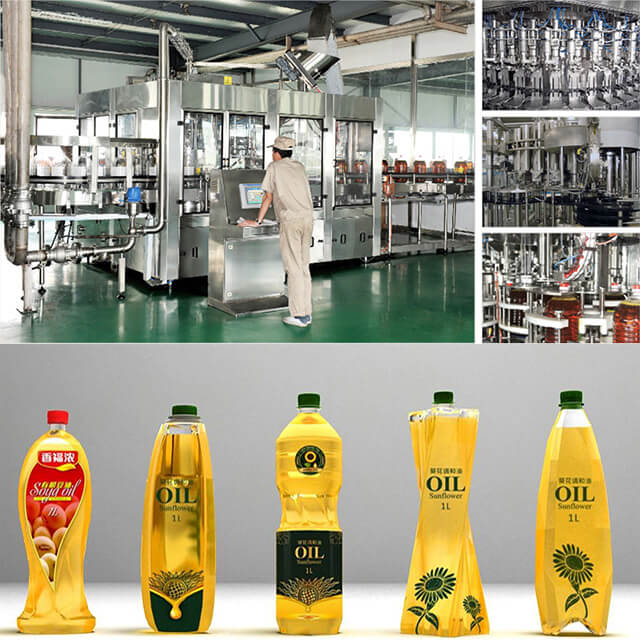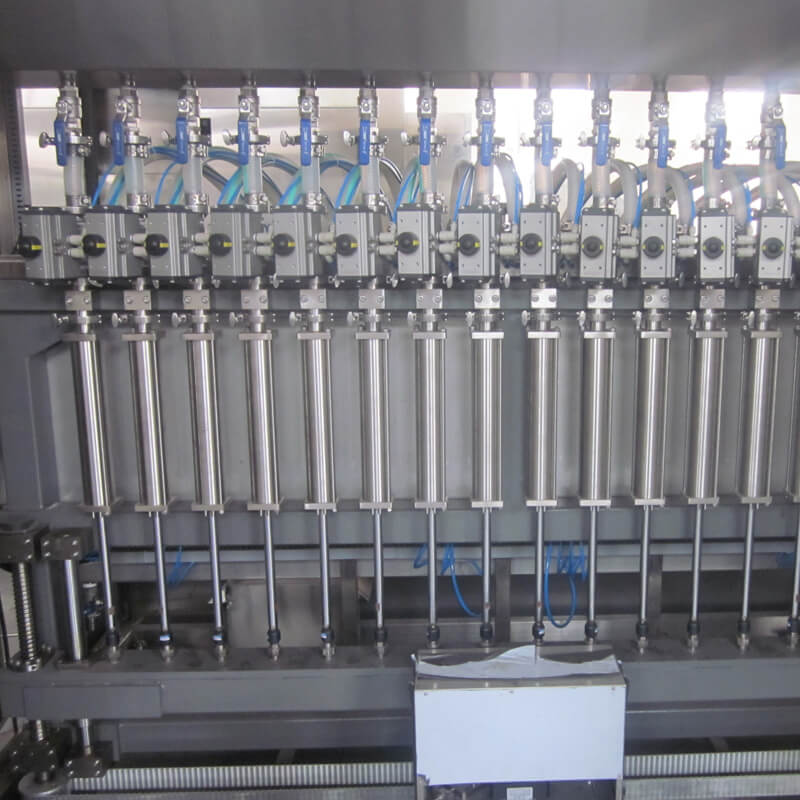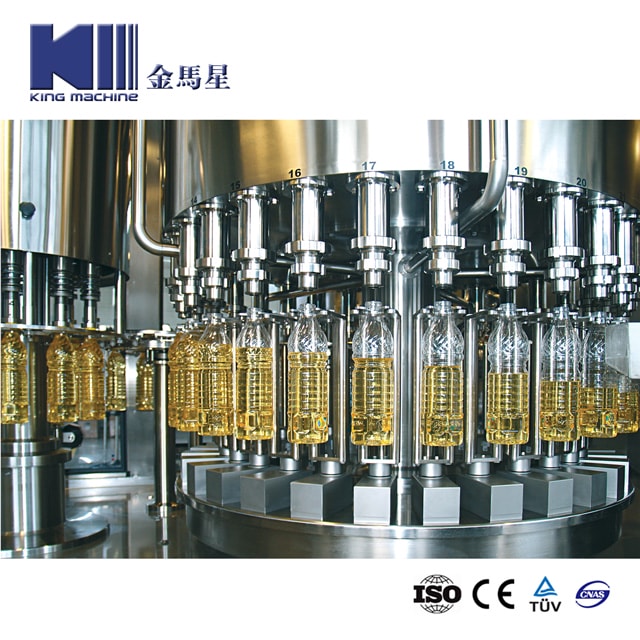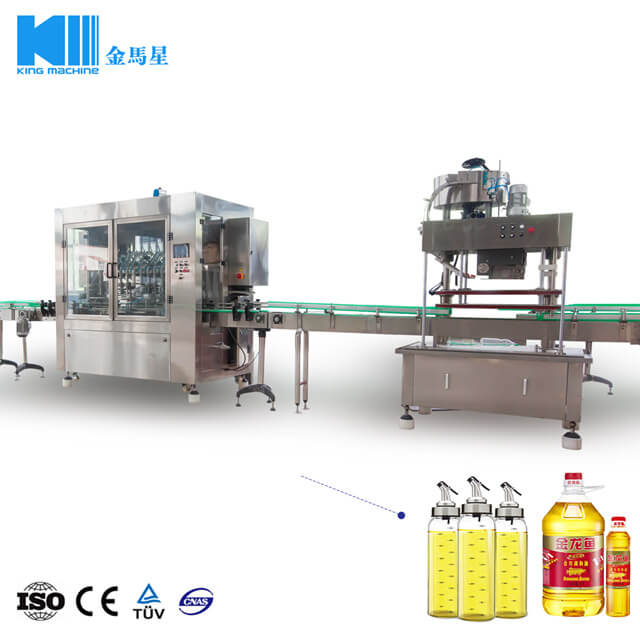
In the industrial packaging world, efficiency, precision, and adaptability are the cornerstones of a productive bottling line. As demand increases for edible oils, lubricants, essential oils, and other liquid-based products, manufacturers must choose the most effective filling technology to meet production needs. Among the top contenders in modern oil packaging are rotary oil filling machines and linear oil filling machines.
Each of these technologies has unique strengths and is designed for specific operational scenarios. This article compares rotary and linear oil filling machines in depth, evaluating them by structure, speed, flexibility, cost, and ideal applications—so you can make an informed decision for your business.
1. What Is a Rotary Oil Filling Machine?

A rotary oil filling machine is a high-speed filling system that uses a rotating carousel to continuously fill bottles or containers as they move through the machine. The filling heads are arranged in a circular formation, and containers are fed into the system, filled during rotation, and then discharged at the end of the cycle.
Key Features:
Continuous motion: Containers never stop moving during the oil filling process.
High output: Suitable for mass production environments.
Compact integration: Often paired with rotary capping and labeling systems for seamless packaging.
Common Applications:
Edible oil bottling lines
Lubricant and motor oil packaging
Large-volume production of cosmetic oils, cleaning fluids, or chemical solutions
Rotary oill filling systems are the gold standard in high-throughput environments where speed, consistency, and automation are priorities.
2. What Is a Linear Oil Filling Machine?

A linear oil filling machine, by contrast, uses a straight-line (or inline) conveyor system. Containers are placed on a belt and pass through multiple fixed filling nozzles that dispense oil into each container one by one or in small groups.
Key Features:
Intermittent or step-by-step motion: Containers are paused during the filling operation.
Modular design: Easy to scale or adjust.
Adaptability: Can handle a wide variety of container shapes and sizes.
Common Applications:
Small-to-medium batch production
Versatile lines with frequent product or container changeovers
Specialty oils (e.g., essential oils, cosmetic oils) and boutique brands
Linear oill filling machines offer flexibility and simplicity, making them ideal for manufacturers with lower production volumes or more varied product lines.
3. Key Comparison: Rotary vs. Linear Oil Filling Machines
To better understand the advantages of each system, let’s compare them side-by-side across several critical factors:
Feature | Rotary Oil Filling Machine | Linear Oil Filling Machine |
Filling Speed | Very high (up to 600 bottles per minute) | Moderate (up to 200 bottles per minute) |
Footprint | Larger due to rotary carousel | More compact; easier to install in tight spaces |
Filling Accuracy | High; stable at high speeds with flow meter tech | High; ideal at moderate speeds |
Flexibility | Best for uniform containers and SKUs | Easily adaptable for different container sizes |
Changeover Time | Longer; often requires tooling adjustments | Shorter; simpler adjustments |
Initial Investment | Higher upfront cost | Lower cost; suitable for startups or SMEs |
Maintenance | More complex with more moving parts | Easier to maintain; fewer mechanical systems |
Automation Level | Typically fully automated with capping/labeling | Available in semi- or fully automated models |
4. How to Choose the Right Oill Filling System for Your Operation
Choosing between rotary oil filling machines and linear oil filling machines depends on your specific production needs and long-term operational goals. Below are five key factors to guide your decision:
1. Production Volume
High-speed, large-scale operations benefit from rotary oil filling systems.
If you produce fewer than 5,000 bottles/hour, a linear system may be more cost-effective.
2. Container Variety
Rotary oil filling machines are best suited for standard, uniform bottles.
Linear oil filling machines can accommodate a variety of shapes, sizes, and closures more easily.
3. Available Space
Rotary systems need more floor space and a centralized layout.
Linear machines are modular and easier to fit into existing lines or small workshops.
4. Budget Considerations
While rotary systems offer a strong ROI at high volumes, they require a higher initial investment.
Linear machines are affordable to acquire and operate, with less complex maintenance.
5. Automation Requirements
If your facility prioritizes full automation and high throughput, rotary is the right choice.
For lower-volume, flexible operations, linear systems offer plenty of semi- and fully-automatic options.
5. Use Case Examples
Rotary Filling Machine in Edible Oil Production
In September 2024, King Machine delivered three rotary weigh type edible oil filling and packaging lines to a large edible oil bottling plant in Libya. This large-scale delivery project demonstrates King Machine's ability to provide flexible, customized, high-performance edible oil filling equipment with a filling speed range of 1,200 bottles/hour to 6,000 bottles/hour.
Click here to learn more about the project: Libya Edible Oil Plant Boosts Capacity with Three King Machine Oil Filling Lines

Linear Filling Machine in Motor Oil Packaging
A mid-sized lubricant manufacturer handles 5 SKUs across multiple container formats (500ml to 5L). The linear oil filling machine provides the flexibility needed to switch between products quickly, without expensive tooling. It also fits perfectly within the facility’s limited space and is operated by a small team with minimal maintenance costs.
6. Conclusion
Both rotary and linear oil filling machines play essential roles in today’s packaging landscape. The right choice depends on your production scale, product range, space, and budget.
Choose a rotary oil filling machine if you require:
Maximum output
Uniform container handling
Fully automated high-volume production
Choose a linear oil filling machine if you need:
Flexibility for varied containers
Shorter changeovers
Lower investment and operating costs
Before making a purchase, analyze your current production data and growth forecasts. Investing in the right filling technology can significantly improve efficiency, reduce waste, and increase overall profitability.
At King Machine, we specialize in both rotary and linear oil filling solutions tailored to your unique production goals. Whether you're scaling up a high-speed edible oil line or launching a flexible boutique operation, our engineering team can help you design a filling system that maximizes performance and long-term value.














